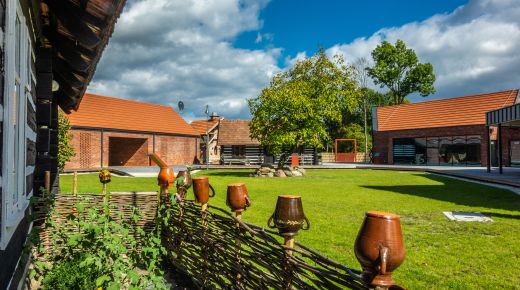The Via Regia represents an extraordinary blend of religious, commercial, and cultural traditions. Today, the route of the Way of St. James echoes its ancient path. This thousand-year-old trail remains one of the most popular pilgrimage routes
The Way of St. James is a popular pilgrimage route leading to Santiago de Compostela in Spain, where, according to legend, the remains of St. James the Apostle lie. For centuries, this sacred place has been a destination for pilgrims, and the journey itself has become a symbol of spiritual renewal and deep reflection. From ancient times to the present day, the Iberian Peninsula remains a significant center for Christian pilgrimage alongside Jerusalem and Rome. It's no wonder that the network of pilgrim routes leading to the final resting place of St. James is extensive across Europe. Following the footsteps of those who embarked on this extraordinary journey before, one can discover not only picturesque landscapes and charming towns but also cultural and spiritual richness.
In Poland, the Way of St. James is divided into several dozen sections, with the longest being the Via Regia. This route covers over 900 kilometers, passing through southern provinces, including Podkarpacie. The starting point of the trail is at the Polish-Ukrainian border in the town of Medyka, and there's an additional section starting in Korczowa, both merging in Przemyśl. Further on, the Via Regia leads towards Jarosław, then reaches the capital of the voivodeship - Rzeszów. The route continues through Góra Ropczycka and Pilzno, crossing the provincial borders until it reaches Tuligłowy in Lesser Poland. Through subsequent voivodeships - Śląskie, Opolskie, and Dolnośląskie - the trail leads to Zgorzelec, where it enters Germany. In Podkarpacie, Via Regia is divided into 8 stages. Additionally, within the province, the Nadsańska Way of St. James is marked, leading from Bieliny to Sandomierz.
The trail is marked on-site, allowing pilgrims to easily follow the course of their journey. The symbol of the Way of St. James is a yellow scallop shell with sticks, painted on a blue background, serving as a signpost for all travelers. In the past, anyone who wanted to prove they had completed the pilgrimage to Santiago de Compostela would collect scallop shells on the Atlantic Ocean coast. They served as evidence of the pilgrimage but also as a keepsake. Today, they symbolize this specific route. Additionally, concrete pillars and informational boards are set up for pilgrims, and road signs also aid in navigating the Way of St. James.
Anyone planning to embark on the trail or simply wanting to familiarize themselves with its precise route should visit the website: www.camino.net.pl. There, maps of individual sections with detailed descriptions and essential information necessary for pilgrims before setting out, such as what to bring, arranging accommodation, or information about the pilgrim's passport, can be found. This website provides more information about places dedicated to St. James located along the route.
WHAT TO SEE ALONG THE WAY IN PODKARPACKIE:
Palace and Park complex in Boratyn
former greek catholic tserkov in chłopice
filial church of St. Sebastian in Kosina
Photo: Podkarpackie.Travel



